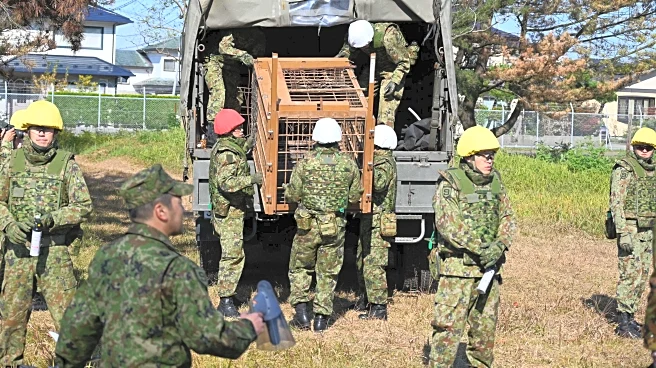What's Happening?
Japan has deployed troops to address a surge in bear attacks in the northern prefecture of Akita. Since April, over 100 people have been injured and at least 12 killed in bear encounters. The Defense Ministry
and Akita prefecture have signed an agreement to deploy soldiers to set traps and assist local hunters. The soldiers will not use firearms but will help manage the bear population, which has been encroaching on residential areas.
Why It's Important?
The deployment of military forces to manage wildlife highlights the severity of the bear problem in Japan. The increasing bear population poses a significant threat to public safety, particularly in regions with aging populations and limited hunting resources. The situation underscores the need for effective wildlife management strategies and the challenges of balancing human and animal populations. The government's response may set a precedent for handling similar issues in other regions.
What's Next?
The Japanese government is expected to develop a comprehensive bear response plan by mid-November. This may include population surveys, communication devices for bear warnings, and revised hunting rules. The involvement of the military may prompt discussions on the role of armed forces in domestic wildlife management. Local authorities may also seek to train more hunters and implement preventive measures to control the bear population.
Beyond the Headlines
The situation raises questions about the impact of human population decline on wildlife management and the ethical considerations of culling animals. The reliance on military forces for wildlife control may lead to debates about resource allocation and the responsibilities of different government agencies. The cultural significance of bears in Japan and the potential impact on tourism and local economies are also important considerations.












